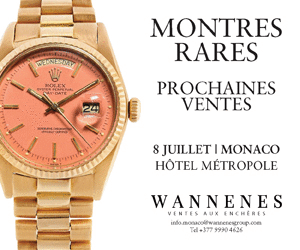80th Monaco Grand Prix: a trip down memory lane with pictures from Monaco archives

The Audiovisual Institute of Monaco opened their archives for Monaco Tribune.
In 1929, a senior Monegasque civil servant created the Monaco Automobile Grand Prix. He was Anthony Noghès, son of the Automobile Club de Monaco’s president. It was a huge challenge: the Principality’s footprint was 1.5km2 at the time. The urban circuit that Anthony Noghès imagined had to be able to host a competition.
On 14 April 1929, 16 drivers pulled up onto the starting grid, with their order drawn at random. The first Monaco Grand Prix was off and running. William Grover-Williams won the race in his Bugatti 35B. A far cry from today’s speeds, the British driver averaged 80km/hr over the 100 laps of the circuit.

- In this archive image provided by the Audiovisual Institute of Monaco, we can see Marcel Lehoux, N°8 at the wheel of a Bugatti 35C. Behind him, William Grover-Williams and his Bugatti 35B, Philippe Etancelin and Christian Dauvergne are fighting it out for this first Grand Prix in 1929.

The Monaco circuit hosted its first Formula 1 race in 1950. The urban circuit quickly proved unique. It is said that drivers dream of winning this Grand Prix in particular. The circuit has barely been modified since its first edition, apart from the creation of the tunnel in 1973 and changes to certain bends: Sainte Dévote, Rascasse and Anthony Noghès. These corners explain the “slow” pace of the Monaco Grand Prix, which is the slowest of the season, with an average speed of 160km/h and some bursts at around 300km/h. Over the course of the 2,337m track, drivers have to adjust to the 19 corners and under a kilometre of pure straight. During the race, the narrow streets make overtaking difficult: whoever starts in pole position has a great chance of winning.

- In the front row, car number 28, a Lotus 18 with a Climax FPF 4L 2495 cc engine driven by Stirling Moss; car number 8, a Cooper T53 with a Climax FPF 4L 2495 cc engine driven by Jack Brabham and car number 18, a Cooper T51 with a Climax FPF 4L 2495 cc engine driven by Tony Brooks.

- Sterling Moss winning in 1960, a World Championship first for a Lotus.
“There is no margin for error and that’s what Formula 1 needs. On some tracks, if you make a mistake you can get away with it, but at Monaco you really pay for it ,” explained Mexico’s Sergio Pérez, one of the Redbull Racing drivers. Every year, drivers brush up against the rails, making trajectory errors in qualifying that will cost them on the starting grid. The only fatal accident on the Monegasque circuit dates to 1967. Lorenzo Bandini, who was in second place and at full speed, lost control of his Ferrari on his 82nd lap. The rear of the vehicle hit the hay bales on the side of the road and immediately bursts into flames. The Italian driver died from his injuries three days later in the Princess Grace Hospital, with third-degree burns over much of his body.

This brought about two major changes to the Monaco Grand Prix: a shorter race with 80 instead of 100 laps and the introduction of safety barriers – to replace the hay bales – which see sparks from some of the world’s best drivers every year.

- Princess Grace and Prince Rainier III presenting the cup to Graham Hill, winner of the 22nd Monaco Grand Prix in 1969. They are in front of the grandstand. There was no podium as such after the race, until 2017: the top three drivers went directly to the royal box for the awards ceremony.


- Aerial views of the Monaco Grand Prix. The first, on Boulevard Albert I and the second on Place du Casino.
For a few days, Monaco is all about its Grand Prix. In addition to the atmosphere, the urban landscape has changed completely. Today, all of the circuit’s different features are stored on a vacant lot in the Alpes-Maritimes. The pits, the different structures, the stands, and walkways… All this equipment is brought to Monaco starting at race day-90. The town’s pavements have recesses for the posts that will support the barriers and fencing. An impressive puzzle that then needs to be dismantled over three weeks. The Principality gets back to its normal appearance, and the equipment is taken away. Until next year!









